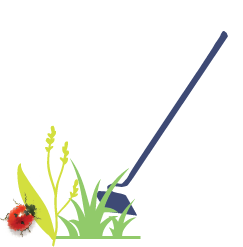9. Use Integrated Pest Management
Help protect our water by using integrated pest management (IPM) practices to control pests around your home. Pests can include insects, plant diseases, and weeds.
You should only use pesticides if necessary. Before using always read the instructions and only use the recommended amounts.
How do pesticides affect our water?
Excess pesticides applied to lawns and around surfaces like driveways and sidewalks wash off and pollute streams. These include bug killers, weed killers and fungus treatments.
Monitor Your Yard to Reduce Pesticide Use

The best way to minimize lawn and garden pests is to regularly monitor your yard. Early detection and timely intervention can prevent or reduce serious problems, often eliminating the need for pesticides and reducing risks to people and the environment.
Never treat a pest without knowing what it is. What you see might be a secondary symptom. Consider an IPM approach instead, which helps solve pest problems while minimizing risks to people and the environment.
5 Basic Steps to Get Started with Integrated Pest Management:
- Inspect and Monitor
Regularly check for pests or signs of damage in your yard. - Identify the Pest
Determine the specific pest causing the problem. - Set an Action Threshold
Decide when intervention is necessary to prevent unacceptable damage. - Choose Control Measures
Select control methods that are both cost-effective and environmentally friendly, such as:- Cultural, Mechanical, or Physical methods
- Natural or Biological methods
- Chemical methods, as a last resort
- Evaluate Effectiveness
Continue inspecting and monitoring to assess the success of your efforts and keep detailed records.
Need help identifying a pest?
Contact your county extension office for help with identification.
For more info see our pest mgmt resources.